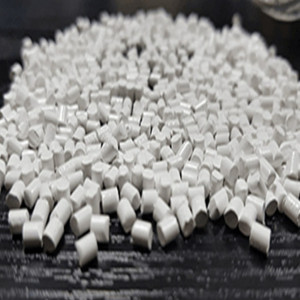| Parsa Polymer Sharif |

| No Title | 0.02 MB |
| Registration Date | 4 Oct 2018 |
| Revision Date | 4 Oct 2018 |
| Share |
Food Packaging
MasterbatchIn nano-scale, nanoparticles produce the reactive oxygen species more than bulk, therefore higher antibacterial activity appears in nanoparticles. This product also shows antibacterial activity relying on INSO 10900 (Measurement of antibacterial activity on plastics and other non-porous surfaces) which has been mentioned in the following table. It should be mentioned that these results have been obtained by only 7Wt. % of the masterbatch in final product. Antibacterial activity is defined as the ability of a material to eliminate the bacterial contacting with that. It is calculated by comparison of the logarithm of the number of the bacteria in the control sample and in the corresponding sample of that material.
Synthetic polyamides are commonly used in textiles, automotive applications, carpets and sportswear due to their high durability and strength. The transportation manufacturing industry is the major consumer, accounting for 35% of polyamide (PA) consumption. Extensive research has been carried out in the last decades in order to investigate possible methods to prepare antibacterial plastics. New plastic materials with inherent antibacterial properties can be made for this purpose by polymerization or copolymerization of new monomers or by chemical modification and/or blending of polymers. Masterbatch (MB) is a solid or liquid additive for plastic used for coloring plastics (color masterbatch) or imparting other properties to plastics (additive masterbatch). The use of masterbatches allows the factory to keep stock of fewer grades of the polymer, and to buy cheaper natural polymer in bulk. The most frequently used approach to prepare antibacterial plastics is to include various organic or inorganic substances, such as tea extract, chitosan, copper, silver, zinc, etc. in polymer matrices.The antibacterial activity of nano particles has been demonstrated against human pathogenic bacteria, mainly E.Coli and S.aureus.